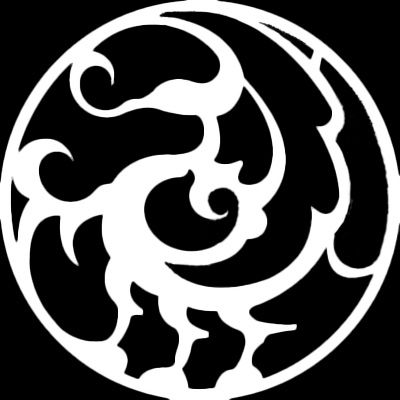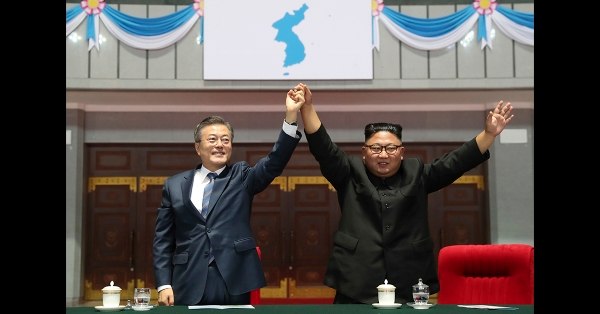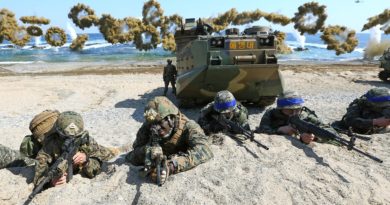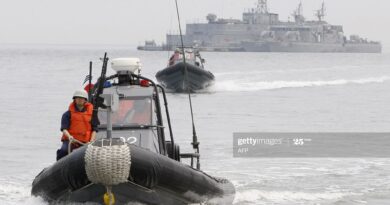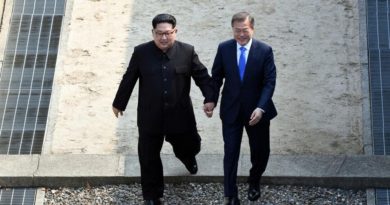DPRK Continues to Profit from 5.18 Incident
I’m writing this in May of 2020, forty years after the events of May 1980, which included the 5.18 Kwangju uprising. Further, we are now 25 years removed from the arrests of former Presidents Chun Doo Hwan and Roh Tae Woo along with other senior government, military, and business leaders. Most of the individuals made statements at the time of their sentencing accepting the punishments for their actions, and hoping that the ROK could move forward as a united nation. Clearly, that has not happened.
5.18 Defamation
President Chun was forced to attend a hearing in April this year on charges of defamation for referring to activist priest Cho Chul Hyun as “Satan wearing a mask.” This remark was made in response to Cho’s past statements regarding the events of 5.18 and President Chun’s assertion that ROK troops did not fire on civilians from helicopters. Multiple eyewitnesses have indicated that they did see ROK troops firing from helicopters; however, these witnesses also make claims that contradict State Department cables published on the US Embassy to the ROK’s website. Paul Courtwright (former Peace Corps member in the ROK from 1979-1980) told the Korea Herald that he witnessed ROK troops killing civilians and then tried to inform the US Embassy on 26 May, but nobody took him seriously. But the cables reveal that the US diplomatic corps, indeed all levels of US leadership in the ROK, took the situation very seriously.
Minjoo Party Representative Lee Gae Ho is proposing an amendment to the 5.18 Democratization Movement Special Measures Bill. This amendment would outlaw any speech that distorts, slanders, or fabricates the historical truths of the 5.18 Democratization Movement or any person or organization associated with the movement. The punishment for such actions would be no more than 7 years imprisonment and 70 million Won fine. The DPRK has praised this sentiment in the KCNA and is using the 5.18 Incident once again to foment strife in the ROK.
What Do We Know About 5.18?
There are many myths that have persisted about the 5.18 Incident, chief among those that the US gave the greenlight to the ROK military to respond with force to the protests. However, the State Department cables reveal that US officials were blindsided by the movement of ROK troops under the CFC into Kwangju. Further, the initial action by ROK Special Warfare troops (where the bulk of brutality occurred) was carried out by elements not under the authority of the CFC and the US was not given any forewarning. Former Commander in Chief of CFC and UNC General John Wickham published his memoirs entitled “Korea on the Brink” in 2000, and this book provided a good overview of the events leading up to both the 12.12 and 5.18 Incidents.
Gen. Wickham noted that DPRK infiltration into the ROK in the period before and after President Park Chung Hee’s assassination was increasing. The USG assessed at the time that these DPRK agents were possibly preparing for an invasion in the Spring or Fall of 1980. After President Park’s assassination and before President Chun’s election, the ROK was led by Prime Minister Choi Kyu Hah, whom the ROK Army generally viewed as weak and indecisive. President Choi’s moderate approach to the student and labor union demonstrations provided room for these groups to grow and begin demanding the removal of martial law and the overthrowing of the government. Consequently, Gen. Chun, then KCIA Director, arranged to use force to put down the demonstrations in Kwangju.
After the initial crackdown on the protests, the ROK Army withdrew outside of the city and the student groups were taken over by heavily armed men donning Army fatigues. USG reports indicated that these groups had commandeered over 350,000 rounds of ammunition, over 5,600 military weapons, and demolitions stored in explosive storage bunkers. Further, on 24 May, these groups began holding court and executing the more moderate protestors and “counter-revolutionaries.” Thus, what began as student protests quickly evolved into an armed insurrection by groups espousing communist talking points. Also, the DPRK agent infiltration into the ROK and US assessments of clandestine troop buildups on the DMZ at the time, give credence to the theory that the DPRK at least influenced the insurrection.
Conclusion
The 5.18 Incident and the events leading up to that tragedy are complex and by no means settled history. We still do not know whether those armed men in Army fatigues were DPRK agents themselves, or were receiving instruction from DPRK agents. But outlawing any discussion of that possibility will certainly bar the people from being able to uncover the truth. Moreover, the ROKG taking action while being cheered on from the sidelines by the DPRK is highly unsettling. The US is once again in a precarious situation and should privately stress to ROK officials that further encroachments on free speech in the ROK goes against the interests of both the Korean people and the United States. Ironically, the Moon Administration is looking more and more like the Chun Administration with these actions, and the DPRK continues to profit from events 40 years in the past.
